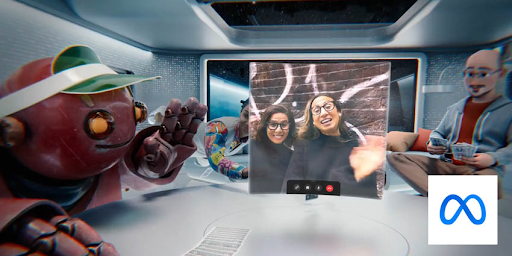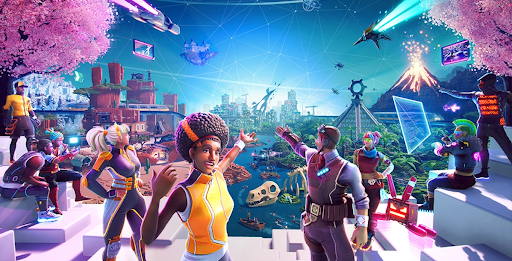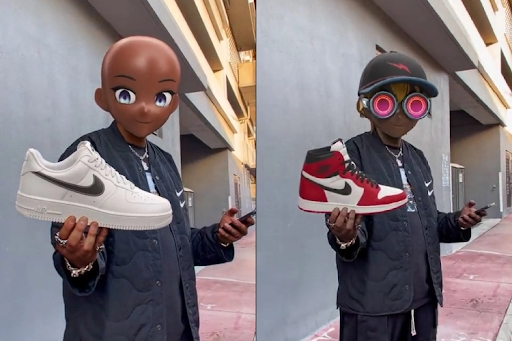Let's Discuss
Enquire NowNFT – This word made of 3 block letters is one of the most hyped things that is happening in the tech space at the moment. Another hyped word is the Metaverse, which gives you the wings to teleport virtually anywhere within that virtual world. You might be able to take an “in-person” meeting with your client or whoever you want to meet, who might be miles away from you. You will live virtually through your avatar or even your real video in this virtual world. You will be able to purchase apparel and other accessories which you could wear or show others, just like the way we do in our real world. These items could be purchased from virtual stores hosted by big brands or from a store that sells them all by shelling out some of your crypto tokens. All these come under another hyped word of our present times which actually acts as a superset of all other words that we mentioned earlier, Web 3.0.
Sounds interesting? Then let’s take a deep dive into these “buzzwords”.
Web 3.0 : The decentralised web
Most of the latest applications or services that are available to us online were a byproduct of one of the biggest transitions that happened to the web since its inception. That’s right, the original web or Web 1.0 were merely static web pages where users could not give feedback or inputs but had the option to only consume or read the information that was displayed on the screen. Then came the big transformation for the web, Web 2.0. This allowed a 2 way communication between the user and the service that he was using online. The impact Web 2.0 has brought to the world economies, businesses and our lifestyles are endless. Gmail, Facebook, Instagram, App stores are all by products of this revolution. At first, these were utility features that helped to get our things done, but now, they have become quintessential parts of our daily lives. Think about it, how would your life be affected if a cyber attack takes place on the so called FAANG company servers and their services go down even for 5 or 10 mins. It would be so close to sitting in the dark in this modern age. That is the level of dependence that we have on them and the level of control and command that these companies possess over us. There are pluses and minuses linked to this situation. The major plus is the seamless integration and experience their systems and services offer us. The data footprint that we leave in their system is used by them to better understand us and provide services that better suit our needs. But on the flip side, they could sell these data to advertisers and marketers to give us targeted ads and spam. This should be a matter of serious concern since our data is being used by them to make money. Our data is their commodity. We are the commodity. Also, everything comes from a central repository which could easily be controlled by regulators and go through our activities and data without us even knowing. This is good in some instances but is a big minus for the majority of cases. That is where the next phase of web technology comes in…Web 3.0.
Web 3.0 is a decentralised web where computation and storage not only happen within a central entity but is shared among distributed nodes of computers. All actions and activities that are taking place in this space could be monitored and is visible to all the participants in this space. This adds to accountability and transparency. All the governing that happens in this space is not done by any humans or organisations, but are executed by so called smart contracts that are immutable pieces of code and this contract is visible to all. This makes Web 3.0 or so called blockchain trust-less, that is if we are making any transaction with an entity, there is no need for us to maintain or have trust in our counterparts since even if he is the bad guy, no evil could surpass the smart contract logic, hence you are safe. Now let’s have a look into some of the “buzzwords” that we discussed earlier in this space.
Metaverse
This project has been going on for quite some time now with big tech players like Facebook, Microsoft, Apple and Nvidia working on projects to establish their footprint in this new tech sector. But when this word started to get most of the attention was during the second part of 2021 when Facebook publicly unveiled its ambition for this emerging space.

Put on a VR headset and immerse yourself into this virtual world where you could travel places, meet your friends who are halfway across the globe, be in places where you could never have imagined earlier, Eg: you could take a trip through the multiverse which could only be seen in Marvel Films. Metaverse is a project that could be made possible not just because of Web 3.0, there are several other elements that enable this to be a reality like better computation, better VR/AR optics, advancements in graphics and animation, etc.. Web 3.0 is one of the quintessential factors that is needed for this ambitious project to gain traction.

You could attend meetings virtually, rather than keeping zoom calls, your virtual avatar could meet with your counterparts in this 3D space making the experience more immersive. You would be able to purchase merchandise like clothing, footwear, eyewear by spending virtual money called cryptocurrencies or crypto tokens. These commodities could be sold by the brands that we wear or live in our physical space. Eg: Nike is setting up a virtual store in the metaverse through which users could purchase Nike products for their avatars.

They could also sell you unique apparel by minting NFTs of these products which you could purchase, wear and then show how cool you are amongst your Metaverse mates.
Metaverse could also open up the doors to the new age of gaming where instead of viewing your gaming world through some 2D screens, you could actually be in it. Imagine how cool it would be if you could play Subway Surfers and Minecraft in the metaverse.
So Metaverse could really open up a whole new world of possibilities. Now let’s have a look at another “buzzword” in the web3 space, NFT.
Non Fungible Token (NFT)
Suppose if I have a $10 bill and you have another $10 bill, and what if we exchange those amongst us. Is there any difference? Obviously….No. Both these bills represent the same denomination of money. This is the case for all the real-world currencies of the same denomination and could be termed fungible assets. In the crypto world, these real-world currencies are replaced by cryptocurrencies like ether, bitcoin etc.. If the $10 bill in the above example is replaced by any of these cryptocurrencies, the result is still the same. Hence they are called fungible tokens.
Bitcoin or Altcoins like Ethereum, USDT, USDC etc.. are all fungible tokens.
But there is another class of tokens called Non Fungible Tokens, where each token issued is unique from one another. Several NFTs could be minted by a smart contract; each NFT minted could have a unique ID making each NFT unique. Mostly NFTs are used to tokenize digital artwork. Digital content creators could upload their work to servers like IPFS and mint a token representing this artwork by keeping the URL to this location in the NFT token. The person who holds this token from now on will have the content rights for that content. The original creator of the content could sell it to another person or list it in NFT marketplaces like OpenSea. The contract logic could also be in a way that the original token minter could get incentives for every transaction made using his sold token by its owner or any of his approved counterparts.
NFT is a good means of active/passive income for people in the web3 space or for content creators. Nowadays, some people are making millions of dollars by minting and selling their artworks as NFTs.

Well… Are these really the future??
So far, we have talked a lot about these new advancements in the Web 3.0 space. The real question is, are these that big of a deal or is it all just hype?
Well, that can only be answered with time. These technologies mentioned above do have a lot of possibilities and a lot of room to grow. But the impact that could bring about in the tech, as well as the real world, could only be answered with time. The Metaverse for example, which has a lot of possibilities in theory, still remains a question whether it will get widely adopted or will it be just another tech domain. After all, the metaverse is kind of like an updated Facebook where your mode of interaction is in a 3D space rather than the 2D interactions that we do now. It will be a utility, but not a necessity. The same is the case with NFT, tokenizing real and good content is a nice feature. We could overcome the hurdles of doing paperwork for buying a music video from the original content creator if he is tokenizing his creation and selling it to someone. But there are many digital contents that are listed in NFT marketplaces by many people that do not have any particular aesthetic value but are listed out of curiosity. Kind of like a gamble. What if people in the future realise that there is no point in purchasing these kinds of things? Then the demand for these markets could come down. As mentioned earlier, only time could tell all of this.
Looking to launch a project in the web 3.0? A company like Dexlock, that specializes in Blockchaina related technologies is just what you need. Contact us here for more!
Disclaimer: The opinions expressed in this article are those of the author(s) and do not necessarily reflect the positions of Dexlock.



